One of the biggest bottlenecks regarding the performance of a laptop is disk access. Therefore, installing an SSD (Solid State Drive) is a fantastic way to speed it up. It is a great feeling to see how fast Windows or any program starts after installing it. The only disadvantage is the price of this type of disks, but currently, SSDs have much lower prices than few years ago.
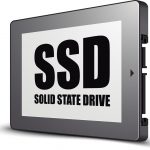
This post is a howto or tutorial applied to a Dell Inspiron 5559, but although each laptop has its particularities, I would like this post to be used as a general guide. Ensure you find your laptop specifications, intructions to extract the disk, and then you just have to find and buy the right material, clone the current disc and exchange it with the new SSD by following these steps:
Have separate system data and other files (optional)
Even when If would not have planned to use an SSD drive, I always try to use different partitions: one for SYSTEM (Operating System and programs) and another for DATA (multimedia files, documents, etc…).
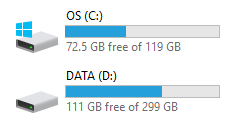
If I want to format and reinstall my OS, i can be pretty sure that my data files will not be erased. And related to upgrading to SSD, large size SSDs are much more expensive. So, given that most of the performance is gained when booting the OS and the programs, the idea is using the SSD as SYSTEM disk. So, if we already have separate disks or partitions, we can clone only the SYSTEM partition.
Anyway, if previously you dont want or cannot split in different partitions, only ensure the HDD you want to clone is not bigger than the target SSD.
Buy the SSD Disk
Most notebooks have 2.5 “inch discs. If your case is an ultra-thin notebook, it may be 1.8 ”.
The thicknesses can also vary and be 7mm or 9.5mm. Anyway, normally 7mm can be used in 9.5mm slot.
The main thing is to make sure in the specifications of your laptop.
In the case of my Dell Inspiron 5559:
http://downloads.dell.com/manuals/all-products/esuprt_laptop/esuprt_inspiron_laptop/inspiron-15-5559-laptop_reference%20guide_en-us.pdf
Storage
---------
Interface SATA 6 Gbps
Hard drive One 2.5‑inch drive (supports Intel Smart Response Technology)
Optical drive One 9.5 mm DVD +/‑ RW driveTherefore, a 2.5 ” inch SSD would fix in my Dell. Depending on the disk or partition we are going to clone, select an SSD disk size enough to contain all that data. Even though with one of 120 GB it was enough for me, I decided to buy this 250 GB model that had a good price:
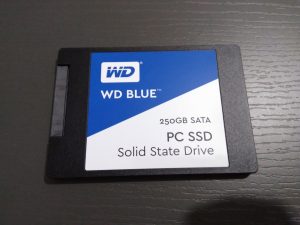

Buy the SATA to USB adapter
We need this adapter that allows accesing a SATA disk via USB for two main reasons:
- During the migration, to allow cloning from the actual HDD drive to the SSD drive (that will be connected via USB during the cloning).
- After the migration, to allow using the HDD drive (that should have been replace by the SSD one) as an external USB disk.
I used this one showed in the photo below…

… but while I am writing this article, it seems not to be available to buy.
Anyway, you can buy instead this one for example that seems to be pretty interesting:


Another option to replace the optical drive by this HDD so we can use a 2 disk (SSD + HDD) laptop (like i finally did). This is covered in a future post.
Connect SSD with the USB adapter
Remove both screws
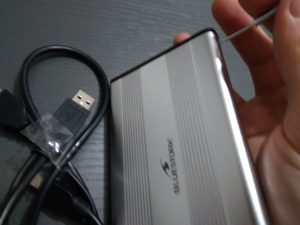
Extract the SATA connector
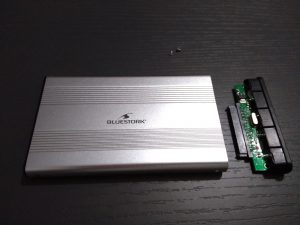
Connect SSD to the SATA connector, insert it in the adapter and screw it again

Now you can simply connect the adapter to the laptop via USB cable
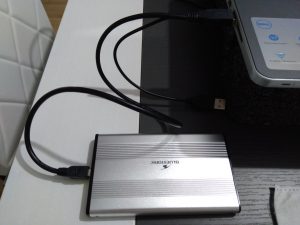
Initialize SSD disk
If its a newly bought disk you have to initilize it (otherwise, the cloning software would not show the SSD as a target disk):
- Run diskmgmt
- The Disk Management Tool will show a popup like the one showed in the image below. Select the same partition style (MBR or GPT) than your current disk (mine was GPT).
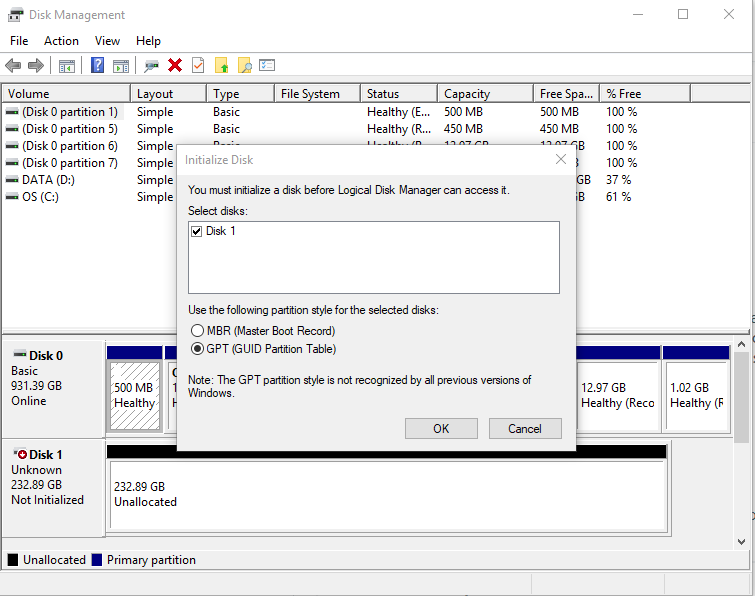
Clone system partitions from HDD to SSD
There are multiple options to clone the disk, but I used Ease Us Todo Backup Free
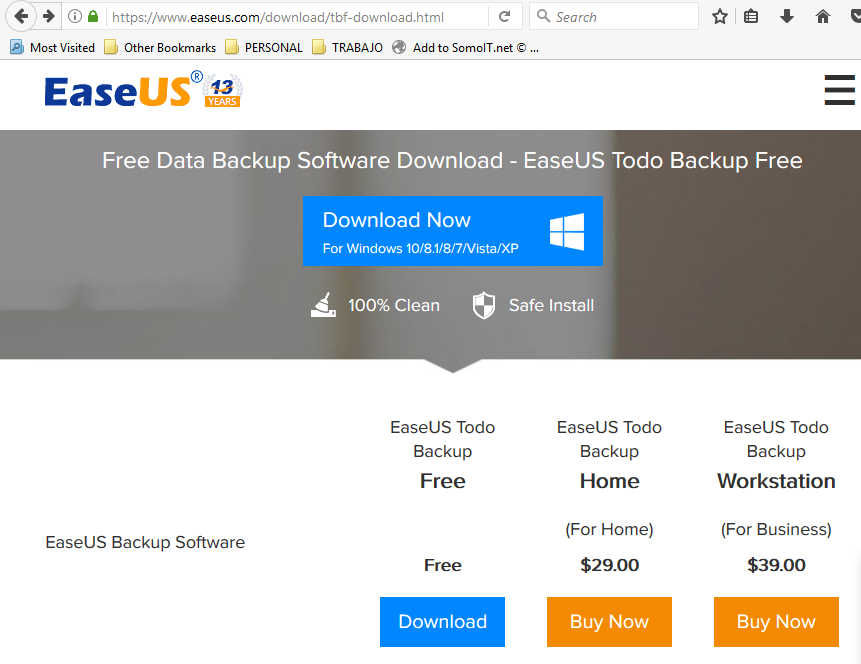
After installing it, select the “System Clone” option
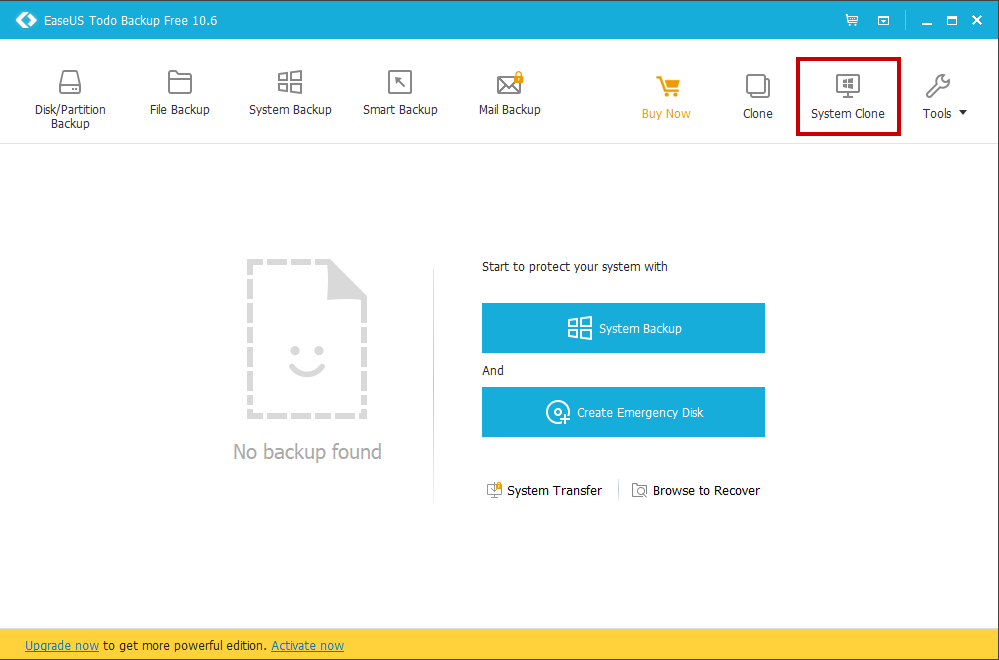
The software will select automatically the source partitions. Now, you must the destination disk. Select the recently initialiazed SSD drive as target and press “Next”
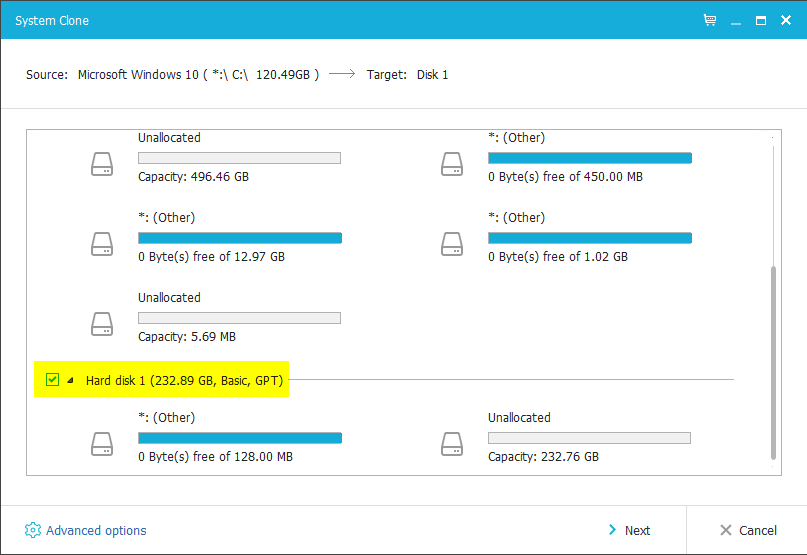
Depending on the source partitions sizes the time can vary. Wait until it finishes and press “Finish”:
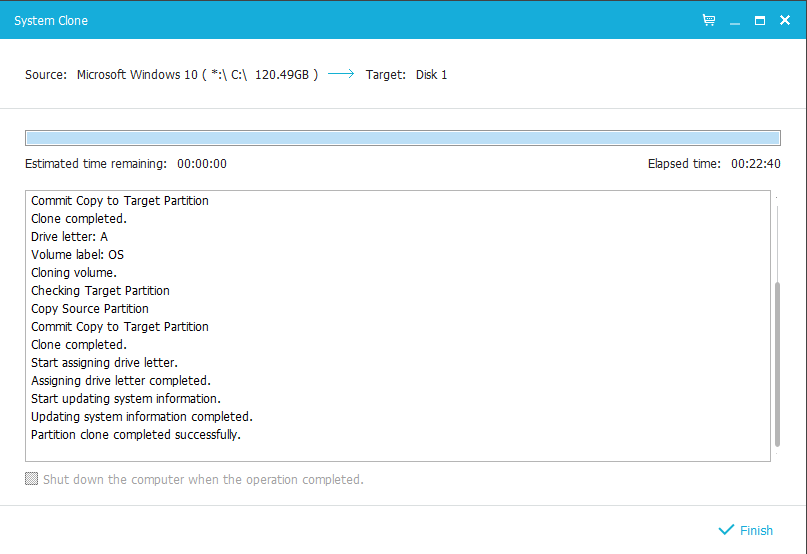
Once cloned you can power off your laptop to proceed to the next step.
Swap HDD with the SSD
After cloning it, the current HDD drive can be replaced by the SSD one.
First of all, remove battery. Slide latch to the left to unlock and remove battery:
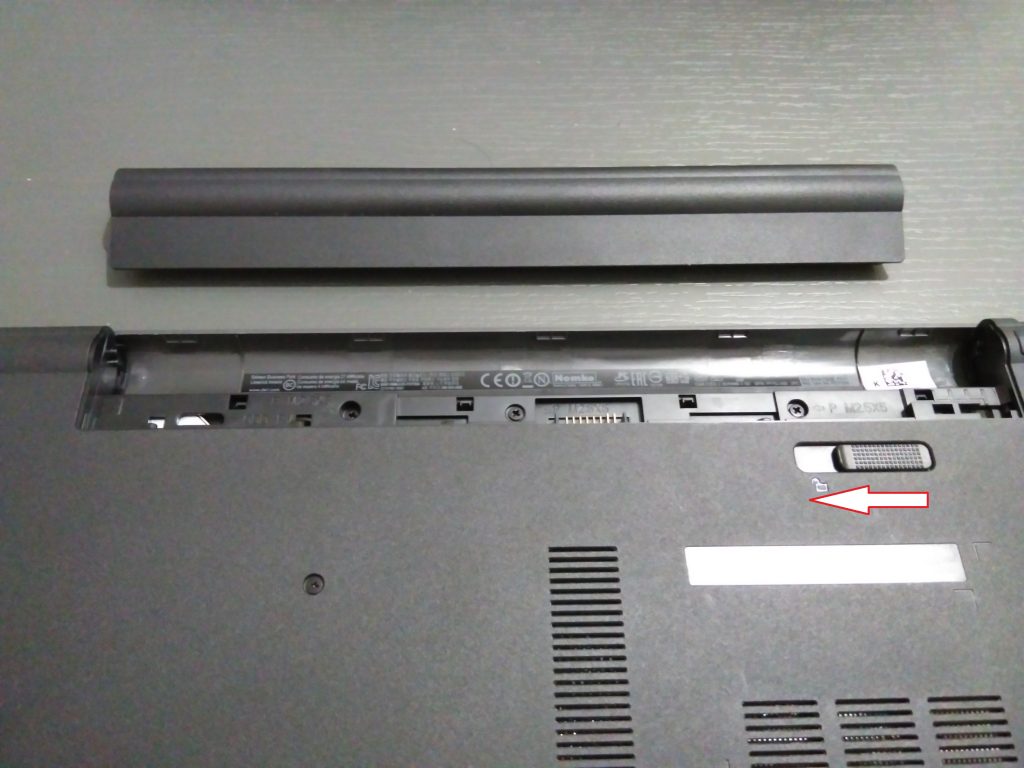
Remove both marked screws and then you can open the panel
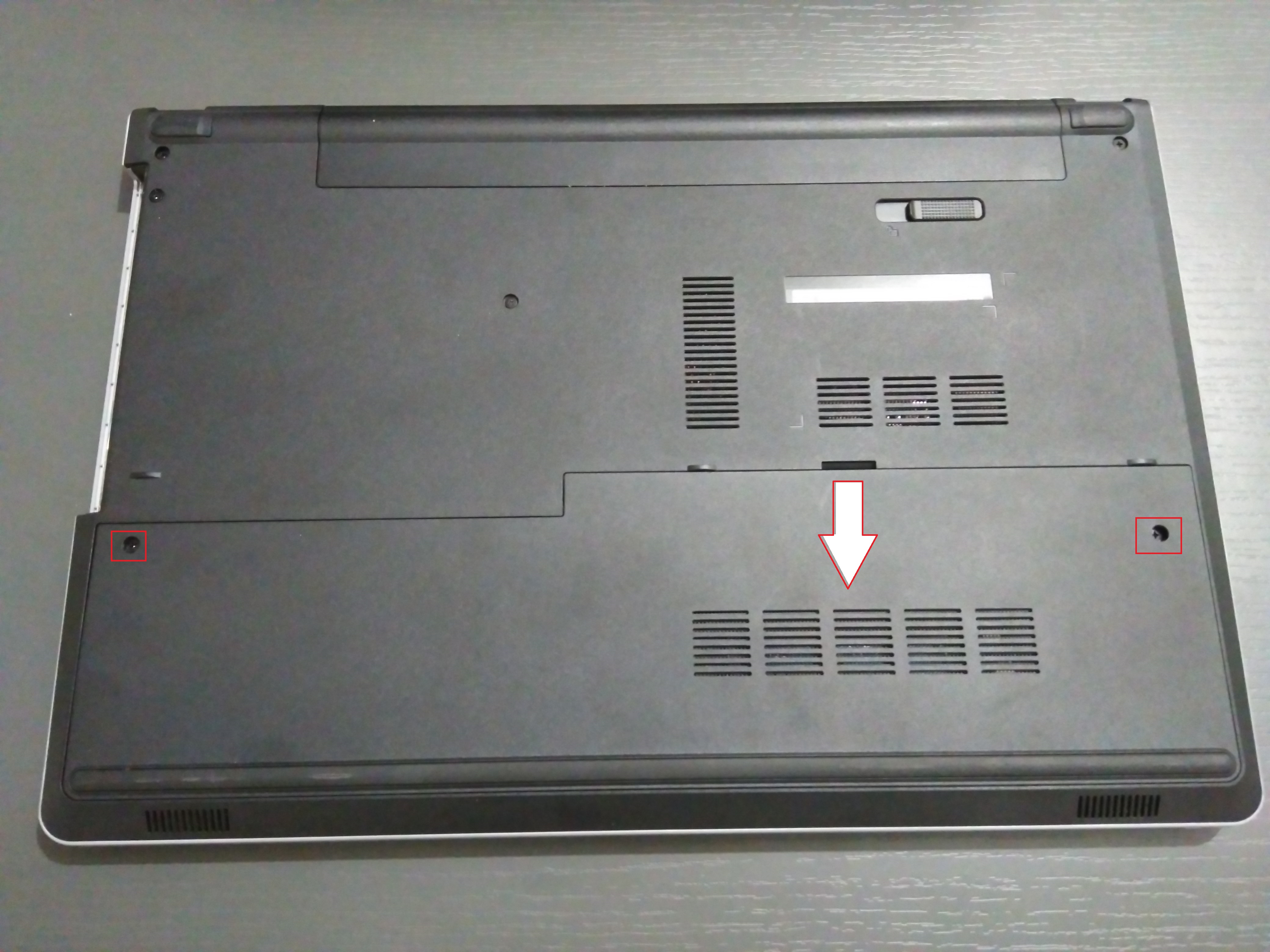
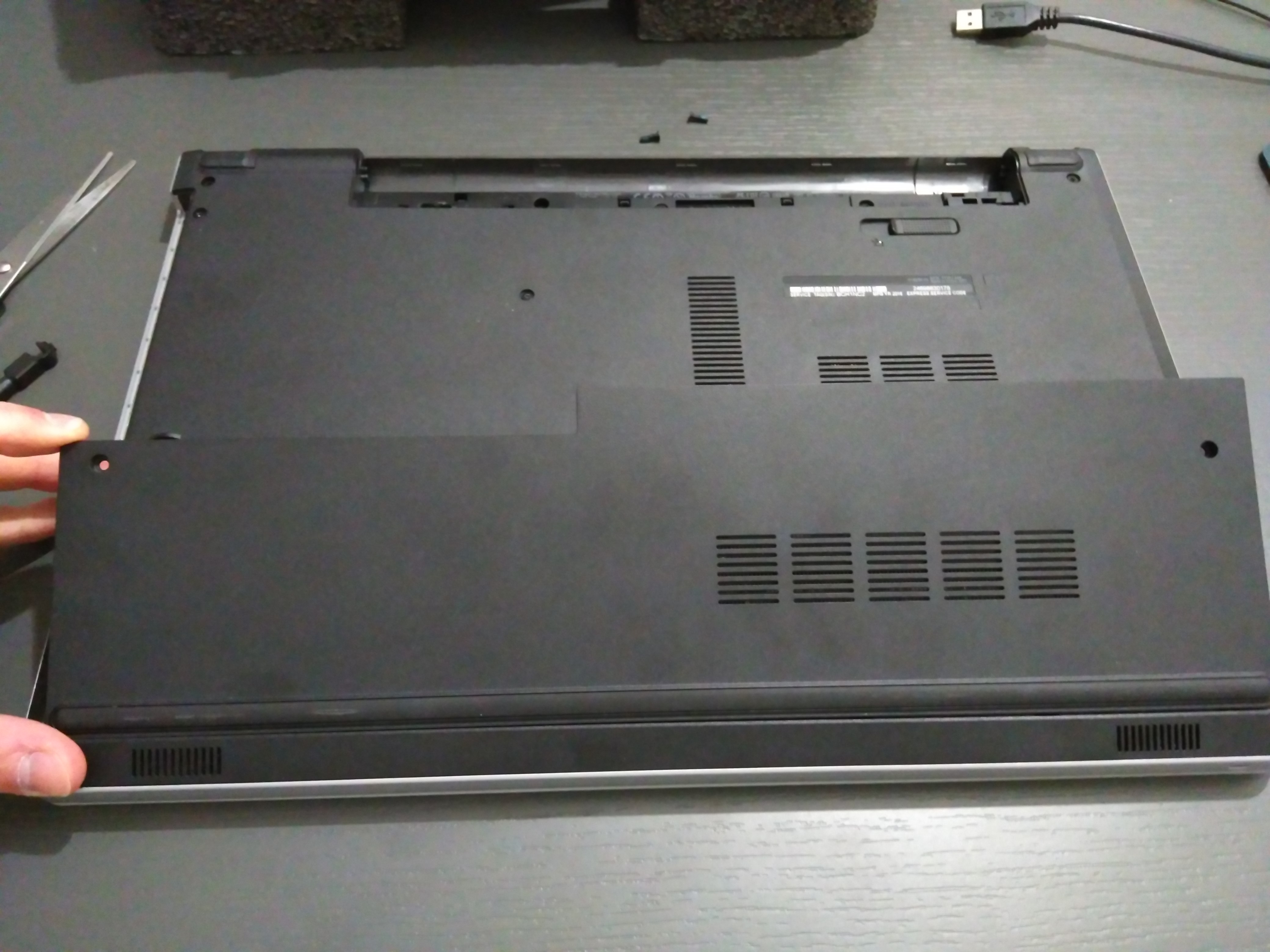
Unplug hard drive bus, remove all 4 screws to lift out the HDD from the laptop
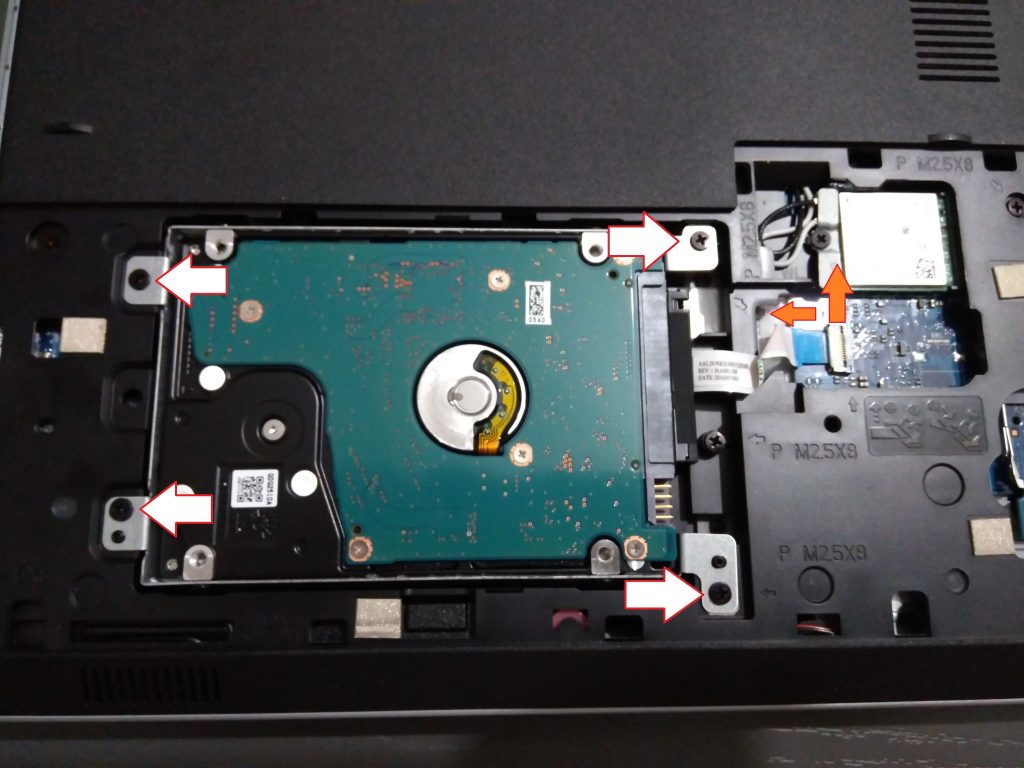
Remove another 4 screws to remove the hard drive from the caddy
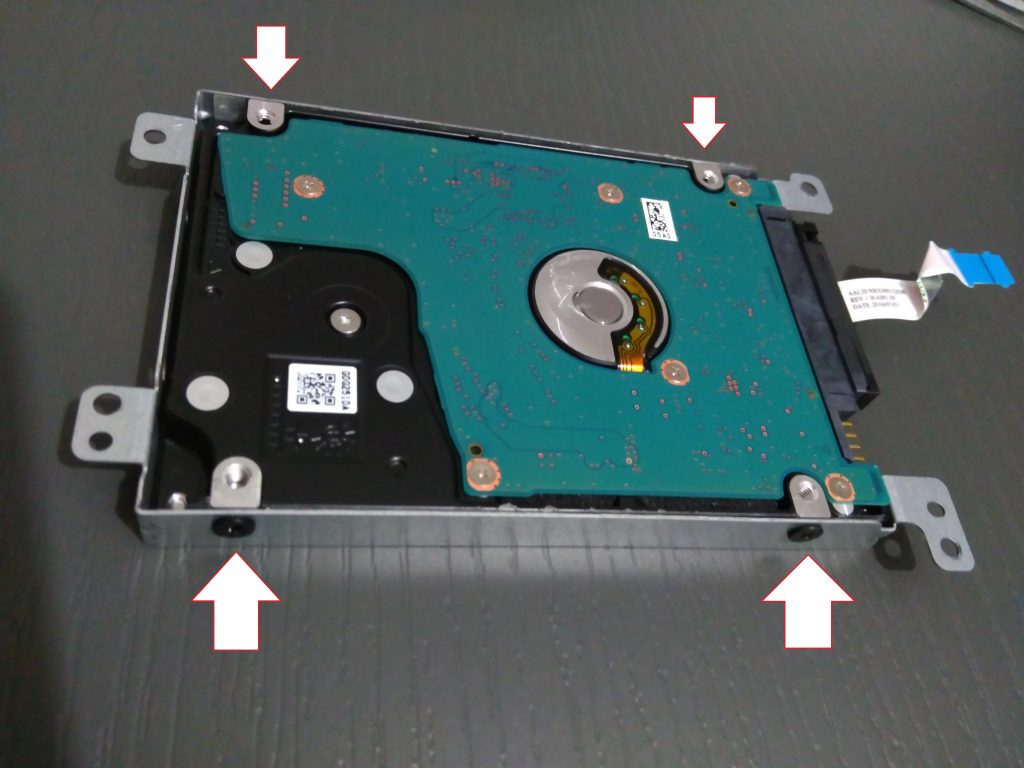
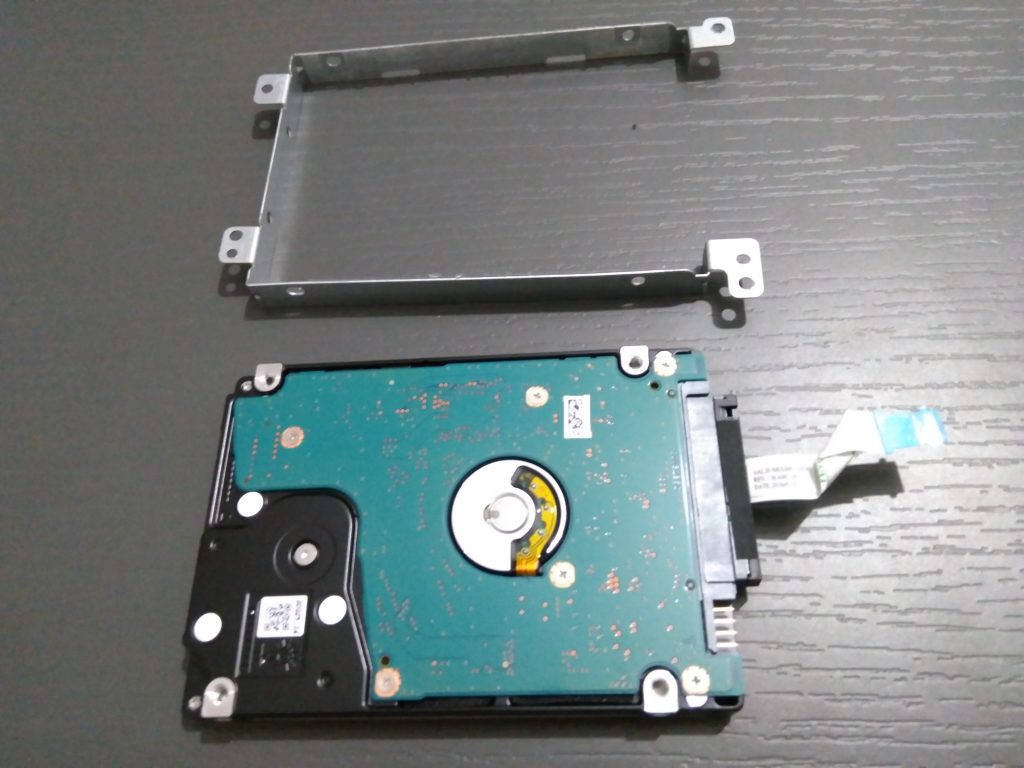
Remove the SATA connector

Now you can revert the procedure to install the SSD in the laptop…
Place the SSD in the caddy and fix it by adding the screws
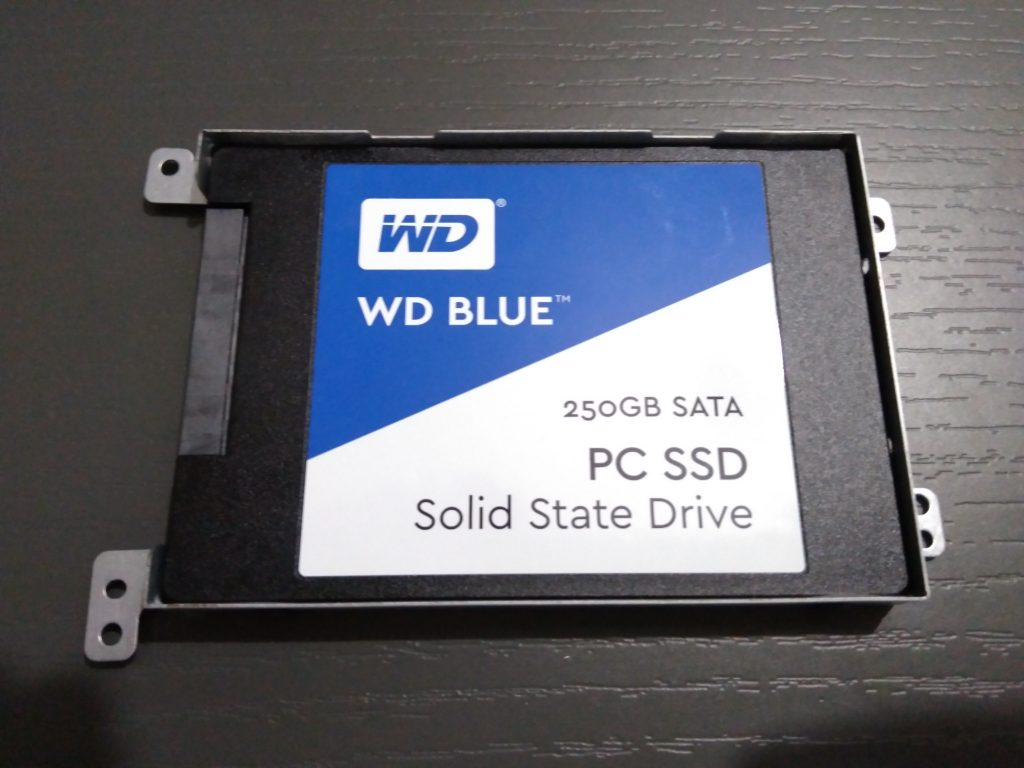
Insert it in the laptop and fix it with another 4 screws
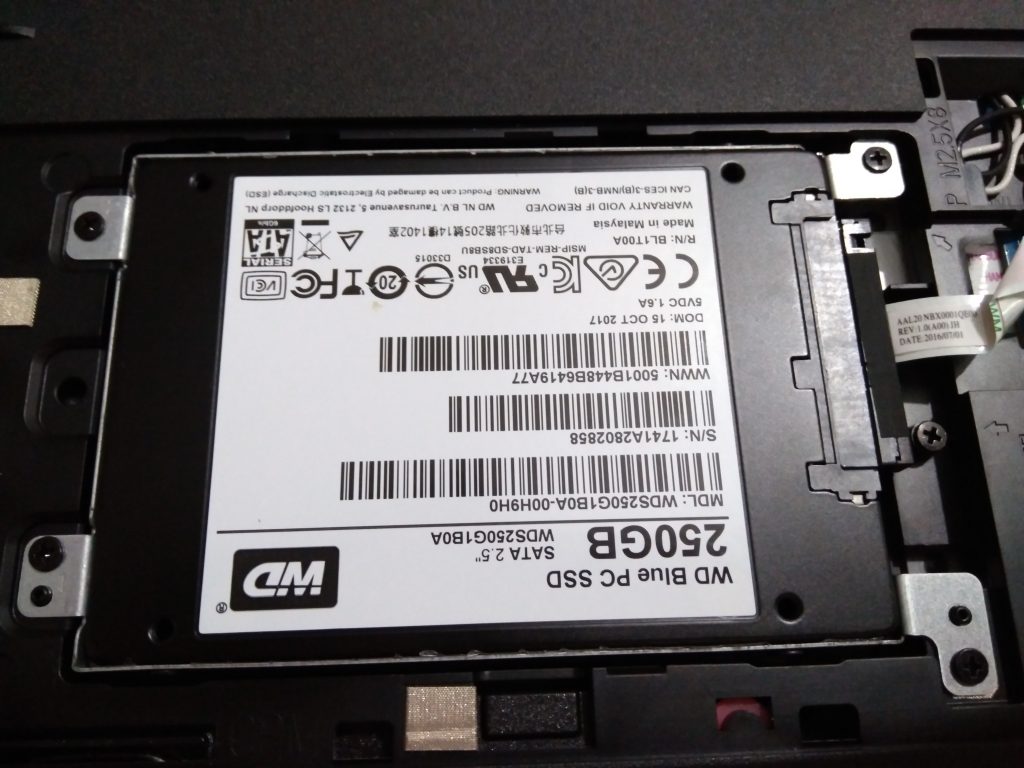
Dont forget to connect the SATA bus again
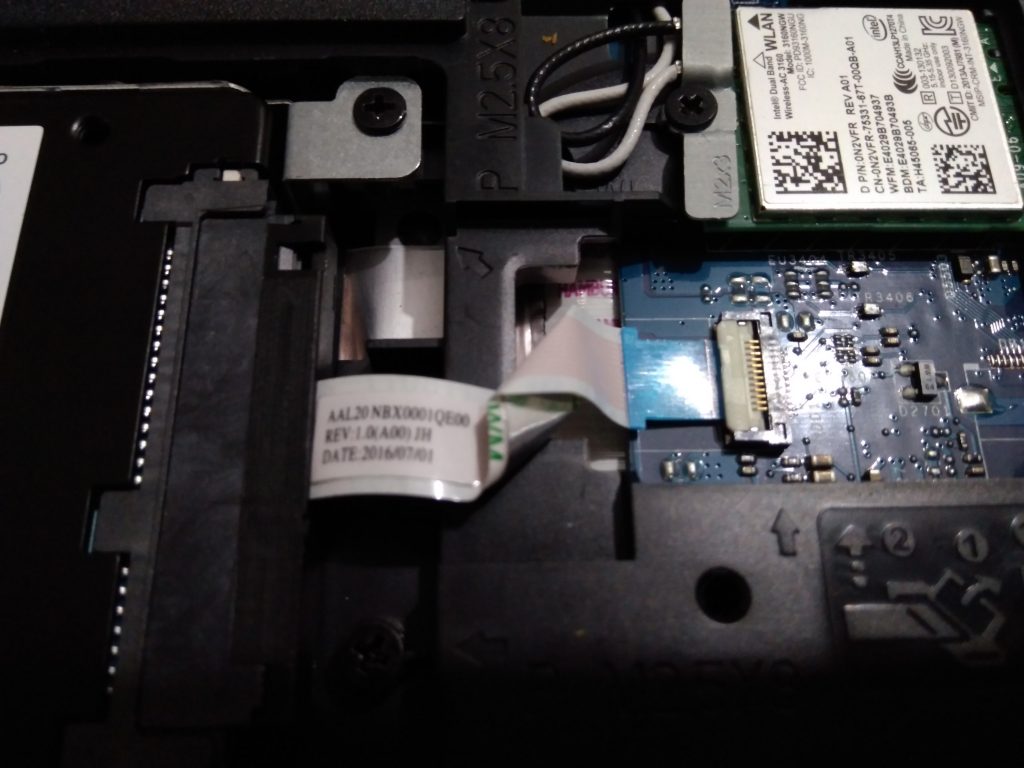
After powering on your laptop, you should see it boots up much more faster and that you have all your settings and software like before migrating to the new disk…

Optimize SSD disk partition
For better performance, run “defrag”, the tool to defragment and optimize drives. The Solid State drive should have been recognized. Select it and press “Optimize”
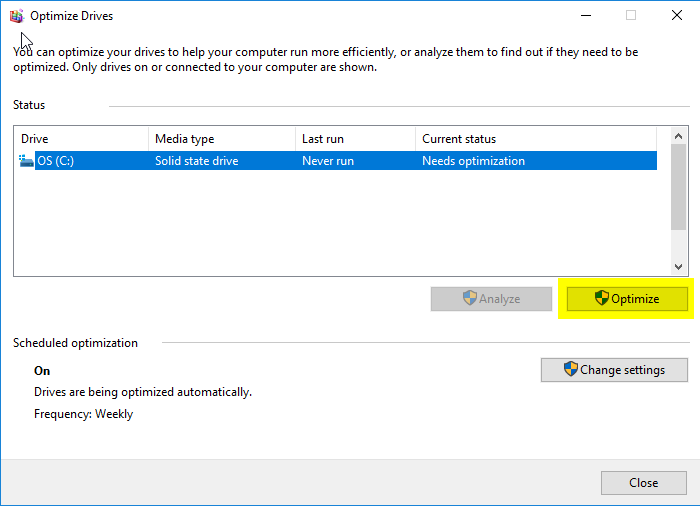
Connect HDD with the USB adapter
There is no need to leave the replaced HDD without use. Convert it to an external drive to store data, backup or whatever you want by connecting it to the SATA to USB adapter.
Finally… enjoy your “new” laptop!
